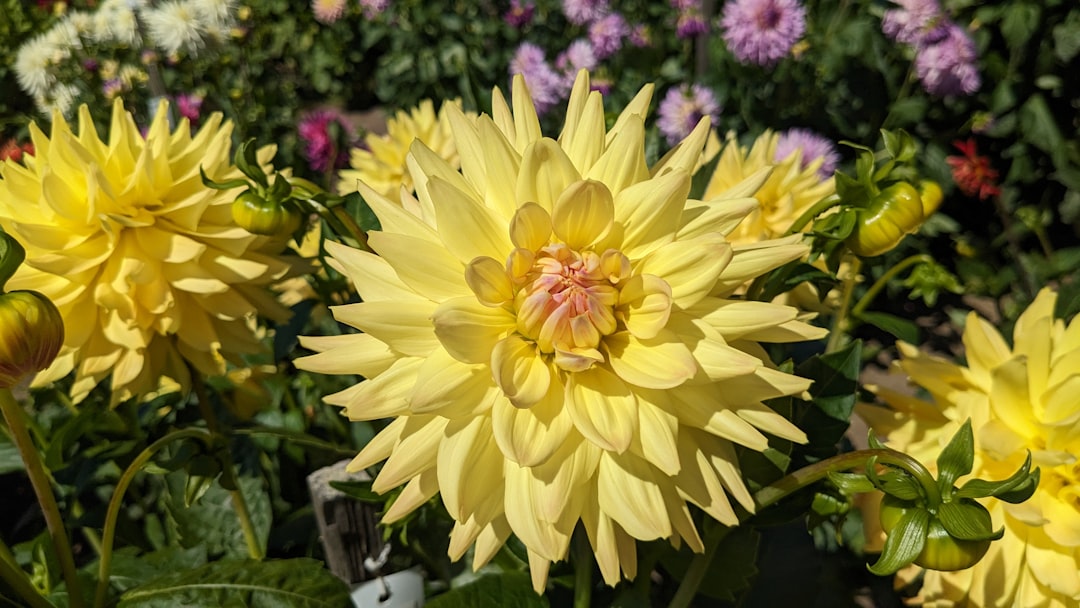Spring Garlic Planting: A Latecomer's Guide to Tasty Harvests

Even if you missed the fall planting window, there's still hope for a bountiful garlic harvest. Spring is a viable time to plant garlic and enjoy both delicious greens and bulbs. In this guide, we'll explore the steps to successfully plant garlic in the spring and reap the rewards of your edible gardening efforts.
First, it's important to understand the different types of garlic available. There are two main categories: hardneck and softneck. Hardneck garlic varieties are known for their bold flavor and large cloves. They also produce a scape, which is a curly flower stalk that can be harvested and eaten. Softneck garlic, on the other hand, has a milder flavor and is better suited for braiding. It typically has more cloves per bulb and stores well.
When selecting garlic bulbs for spring planting, choose ones that are firm and free of mold or damage. You can purchase garlic bulbs from a nursery, garden center, or online. Look for varieties that are recommended for your specific climate and growing conditions. Some popular spring garlic varieties include German Extra Hardy, Music, and Inchelium Red.
Before planting, prepare the soil. Garlic prefers well-drained soil that is rich in organic matter. You can amend the soil with compost, aged manure, or other organic materials to improve its fertility and structure. Garlic also requires full sun, so choose a location in your garden that receives at least six hours of direct sunlight per day.
To plant garlic, break the bulbs into individual cloves. Make sure to keep the papery skin intact. Plant the cloves pointy end up, about two inches deep and four to six inches apart. You can plant the cloves in rows or in a grid pattern. After planting, cover the cloves with soil and gently firm it down. Water the area thoroughly to help the cloves settle in.
Once the garlic is planted, it's important to keep the soil moist but not waterlogged. Garlic doesn't like to sit in wet soil, so make sure the drainage is good. You can mulch the area with straw, leaves, or other organic materials to help retain moisture and suppress weeds. As the garlic grows, you may need to fertilize it with a balanced fertilizer to promote healthy growth.
One of the benefits of planting garlic in the spring is that you can harvest the garlic greens, also known as garlic scapes, in the early summer. Garlic scapes are the tender, curly flower stalks that emerge from the garlic plants. They have a mild garlic flavor and can be used in a variety of dishes, such as pesto, stir-fries, and soups. To harvest the scapes, simply cut them off at the base of the plant when they are about six to eight inches long.
As the summer progresses, the garlic bulbs will continue to grow. You can tell when the garlic is ready to harvest when the leaves start to turn yellow and dry out. This usually occurs in late summer or early fall. To harvest the garlic, use a garden fork or trowel to gently loosen the soil around the bulbs. Carefully lift the bulbs out of the ground and brush off any excess soil. Leave the bulbs to dry in a warm, dry, and well-ventilated area for a few weeks. Once the bulbs are fully dry, you can trim the roots and tops and store them in a cool, dry place.
Spring garlic planting is a great way to enjoy fresh, homegrown garlic even if you missed the fall planting window. By following these steps, you can successfully plant garlic in the spring and harvest delicious greens and bulbs. Whether you're a seasoned gardener or a beginner, growing garlic is a rewarding and relatively easy endeavor. So, don't let a missed fall planting opportunity stop you from enjoying the benefits of edible gardening. Get out there and plant some garlic this spring!
In addition to the practical aspects of spring garlic planting, there are also some fun and creative ways to incorporate garlic into your garden and your meals. For example, you can plant garlic in containers on your patio or balcony if you don't have a lot of space in your garden. This allows you to grow garlic even if you live in an apartment or have a small yard. You can also experiment with different garlic varieties to discover new flavors and textures.
When it comes to cooking with garlic, the possibilities are endless. Garlic is a versatile ingredient that can be used in a wide range of dishes, from Italian pasta sauces to Asian stir-fries. You can roast garlic to bring out its sweet and nutty flavor, or you can use it raw in salads and dressings. Garlic is also known for its health benefits, as it contains antioxidants and has antibacterial and antiviral properties.
Overall, spring garlic planting is a wonderful way to add a touch of freshness and flavor to your garden and your meals. So, don't be afraid to give it a try. With a little bit of planning and care, you can enjoy a bountiful garlic harvest and the satisfaction of growing your own food. Happy gardening!